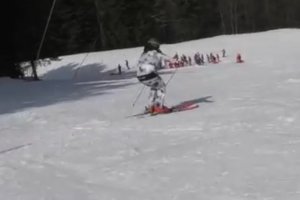Thanks for the detailed response.
No reason to apologize. I thought perchance you read some of their material. Or were DXing and listening to the Bulgarian shortwave broadcast. That's what that tower is for. Your original phrase is far superior. Don't go trashing your thoughts.
Interpolate- yes, good.

Well, maybe not. I looked it up. Looks like either is good. Extrapolate might actually be better in this instance since there's no specific values. However, your use of interpolate seems good too. Feel free to call in a grammarian.
-----------------------------------------
"Extrapolation is an estimation of a value based on extending a known sequence of values or facts beyond the area that is certainly known.
In a general sense, to extrapolate is to infer something that is not explicitly stated from existing information."
"Interpolation is an estimation of a value within two known values in a sequence of values.
Polynomial interpolation is a method of estimating values between known
data points. When graphical
datacontains a gap, but data is available on either side of the gap or at a few specific points within the gap, interpolation allows us to estimate the values within the gap."
-------------------------------------
https://whatis.techtarget.com/definition/extrapolation-and-interpolation
Your video started at 6:30. That's what I watched. You presented it as talking about a delay part in transition relevant to this conversation. I watched the relevant parts. Then, spurred on by the uniforms, had a good rant.
NZ1 explained. I learned we have to use physics instead of hope, and inferred the NZ Team has no hope in a skiing sense. Falling is outside physics apparently. At least he didn't go all General Relativity on us, or I couldn't follow.
No. See above. I'm beginning to think the whole presentation in the middle is now all backtracked?
Who knows what's in a NZ manual. I can guess. He said "our manuals". They're worldwide now? He's in NZ, everything is upside down. He babbled about perfect geometric curves, French Curves, symmetry. Wtf. "Sweet as mate."
I watched the first video you posted. I quoted him, I didn't quote the physics part. Here it is. (This takes forever to transcribe on a phone btw.) Wait2 -doesn't physics involve geometry, and like curves? Possibly even perfect ones.
At 6:30 -
"[Clients/Instructors/Students]
They got this idea that at the top of the turn, as you went into initiation, you had to dive your center of gravity into the new turn. But if we go back for a second...But we've got to use physics. If you just dive inside, you're just falling.
We need to move in such a way that we keep our CoG up, above our base of support. So that we can move, with our legs. That creates a platform... Because we are travelling the snow pushes back, and because the snow is pushing back your CoG has to move inside. In order to balance [?] the forces.
Rather than...moving your center of gravity inside and hoping, [laughs],
hoping, that something comes back at you..."
My point is, the whole basis for this is not what he says. You can do it, but you do not have to.
You can have a platform from the transition. Sure, it will have little pressure, but it builds. You do not need to "wait". You do not need to be a worldcup skier to do this.
You don't need a platform to get inside- push you inside, as he says.
That's what I'm saying. That's the big part actually.
Now, I might go watch the rest of the video. Writing with one finger sucks.
Point B: If the point is for normal skiers, why demo it at 45 mph? (Esp given your dislike of using wcup skiers,) At which point btw, with his level, he could easily have been upside down shortly after transition. No flat spot needed.
If people are skiing with those type of forces in their few carves, sure it happens. Watch a junior race. (Wait, why "a few carves" -Then they're tired and have lunch?)
That's a result of the release of force from the previous turn and body going the other way. Yes, both in the very little gs I've done but now it happens usually on steeper terrain of mixed snow. Though often I think it's because I've left the arm behind before transition. So a mistake. But yes, it requires getting it into position usually quickly.
Ligety used to intentionally do it to counter I think, but it's low, not high.
It's not that uncommon. We're not talkiing Bode speeds.
I'm trying to understand your skiers difficulties.
Seems to be:
Skiers "can't get inside" , this technique of delayed transition gives them a platform to push off. This will help people.
Is this what you're saying?
Ok, those people already have a quite delayed transition, thus have any platform they want, and in the cases you're talking about it's still not working. So, now they push the outside foot? Since they've "got to use physics"? Whst changes to make them better with this??
I'm confused what you're saying by this.
That was in redponse to talking about moving in too quickly sometimes and learning to modify the timing.
What is the issue? They're moving in too fast, they're not moving in, they're balanced on the inside foot? What?


